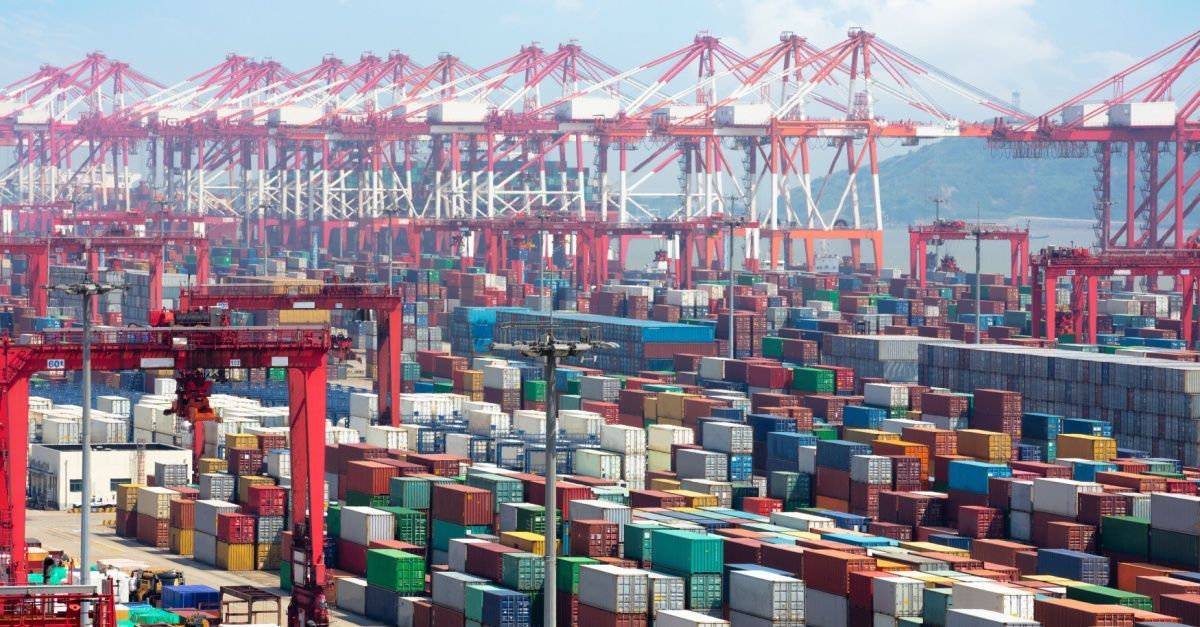Tariff Threats, LTL Rates, and LA Port Calls All on the Rise
Blog Post CTA
With the 2017 tax reductions about to expire this year, President Trump is looking at tariffs as a major source of revenue, especially with a looming $2 trillion deficit due.
Meanwhile, the LTL industry is turning around after a sluggish start to 2025. The LTL Producer Price Index jumped 5.8% in January as optimism continues to rise for a spring pickup. Large U.S. truckload carriers are also optimistic, as many resist aggressive fleet reductions in a turnaround that signals the end of the freight downturn.
Twice a month, we curate some of the top news and trends shaping the world of freight. Continue reading to find out what has transpired in the latter half of February.
Trump Eyes Tariffs as Revenue Fix Amid Push for Tax Cuts
The Trump administration is seriously considering tariffs as a major source of government revenue as it pushes for new tax cuts. With the 2017 tax reductions set to expire in the latter half of 2025 and a looming $2 trillion deficit, the administration is looking to tariffs as a funding alternative.
Trump has repeatedly highlighted “tremendous” tariff revenue, and officials like Kevin Hassett, director of the National Economic Council, and Commerce Secretary Howard Lutnick have claimed new levies could generate hundreds of billions annually. However, economists warn that reliance on tariffs as a major source of revenue could slow growth and trigger retaliation from other countries. Since the introduction of income taxes in 1913, tariffs have not been a major source of income.
Raising the necessary revenue would require significantly higher tariffs, which could hurt businesses and consumers. Trump and his allies argue that past trade policies have failed, using China’s rise as proof. Some Republicans in Congress see potential in the approach, but using
tariffs as a primary revenue stream would mark a major shift in U.S. trade policy, potentially sparking more trade conflicts, especially with the EU.
LTL Rates Climb as Industrial Orders Show Signs of Life
So far, 2025 has seen a slow growth in LTL freight volumes. For the most part, the industry has been weighed down by weak demand and harsh winter weather. But optimism is building for a pickup in the spring. LTL carriers are still securing contract rate increases, and industrial activity is gaining momentum.
The LTL Producer Price Index jumped 5.8% in January, the sharpest increase since Yellow shut down in 2023. While freight demand hasn’t caught up yet, shippers feel more confident.
Manufacturing orders are rising, and key industry indicators like the PMI have turned positive for the first time in over two years.
LTL carriers are
preparing for stronger demand, although shipment volumes are still down. Some executives expect a slow recovery, but more shippers anticipate better conditions in the months ahead. March will be a key test, with potential tariff changes and an expected seasonal uptick in freight activity.
Truckload Carriers Slow Capacity Cuts as Market Signals Shift
Large U.S. truckload carriers have resisted aggressive fleet reductions in a turnaround that signals the end of the freight downturn, with signs that demand could pick up sooner rather than later. Shippers currently hold the upper hand in rate negotiations, but trucking executives believe the market could balance out later in 2025.
The Journal of Commerce Truckload Capacity Index hit its lowest point in a decade, reflecting years of fleet reductions. However, equipment cuts have slowed, with some companies holding off on further downsizing. Trucking executives point to signs of recovery, including rising industrial orders and a 6.4% year-over-year increase in January’s truckload Producer Price Index.
Small carriers continue to leave the market, but not fast enough to tighten capacity. Larger fleets remain cautious, with most limiting growth to dedicated operations. Some expect freight rates to improve in the year's second half, but whether that happens depends on how much excess capacity remains in the system.
FMCSA Reopens Comments on Broker Transparency Rule
The Federal Motor Carrier Safety Administration (FMCSA) is giving the public more time to comment on a proposed rule that would require freight brokers to share rate and payment details with carriers. Following a request from the Small Business in Transportation Coalition (SBTC), the comment period is now open until March 20.
The proposed rule would require brokers to store electronic records of their transactions and provide access within 48 hours of a request. It would also set standards for these records, ensuring they include all charges, payments, and claims related to a shipment. However, the
FMCSA did not include SBTC’s request to ban contract clauses that waive a carrier’s right to review this data. Officials say they may reconsider that issue after reviewing the next round of comments.
Nikola Bankruptcy Raises Doubts About Hydrogen Trucks
Nikola’s bankruptcy has cast a long shadow of doubt on hydrogen-powered trucking, a technology that was supposed to compete with battery-electric vehicles. The company, once seen as a leader in the sector, said it could only support its trucks until the end of March.
Another fuel-cell truck maker, Hyzon, has also signaled trouble, warning of layoffs amid uncertainty over government subsidies. Hydrogen trucks have been promoted as a lighter alternative to battery-electric rigs with faster refueling times and longer ranges. However, they require an expensive fuel supply chain, and stakeholders say they can’t compete with diesel without strong subsidies.
Repair costs are another concern. One operator reported a $200,000 repair bill for a damaged fuel cell, more than the price of a new diesel truck. Hyundai now leads the
hydrogen truck market in the U.S., with a small fleet operating in California and Georgia. Some fleet operators still believe in the technology but are hesitant to invest further, waiting to see if manufacturers can survive and improve reliability.
US Proposes Heavy Fees on Ships Built in China
The U.S. is proposing new charges on container ships built in China, with fees reaching up to $1.5 million per port call. The plan, announced by the U.S. Trade Representative, also targets vessel operators with Chinese-built ships in their fleets, imposing a $500,000 fee per company. Chinese-based carriers, including Cosco, could face a $1 million charge per port visit.
These costs are expected to ripple through the shipping industry, with carriers likely passing them on to shippers, leading to higher prices for imported goods. The proposal follows an investigation that found China’s trade practices give it an unfair advantage in shipbuilding and ocean shipping.
The plan also calls for more U.S. export cargo to be transported on American-flagged and crewed ships. A public hearing is set for March 24, and President Trump will decide. About 17% of container vessels calling at U.S. ports are Chinese-made, representing more than 1 million TEUs in imported goods last year.
Port of Los Angeles Starts Year With Record Container Volumes
The Port of Los Angeles moved 924,245 twenty-foot equivalent units (TEUs) in January, an 8% increase from last year. This was the busiest start in the port's 117-year history. The volume continues a seven-month trend of high volumes, averaging more than 927,000 TEUs monthly.
Port Executive Director Gene Seroka attributed the surge to a strong economy and importers bringing goods ahead of potential tariffs and the Lunar New Year.
Loaded imports rose 9.5% to 483,831 TEUs, while loaded exports dropped 10.5% to 113,271 TEUs.
Experience Seamless Shipping With Entourage Freight Solutions
Entourage Freight Solutions believes in total transparency in the shipping process. That is why we invest in tech solutions that extensively track every shipment, monitor every driver, and squeeze out every bit of efficiency without sacrificing quality. Our state-of-the-art platform uses cloud-based GPS tracking to keep you informed, reroutes shipments on the fly to avoid delays, and even reacts to real-time market changes to ensure you get your shipment on time and as soon as possible.
Our Services
- Full Truck Load (FTL): When you need a truck all to yourself.
- Less Than Truckload (LTL): Efficient solutions for multi-stop shipments or combining smaller loads to save on costs.
- Refrigerated Trucking: Keeping your temperature-sensitive products fresh and safe.
- Cross-Docking: Strategically located facilities in Shelby, Ohio, Cedar Rapids, Iowa, and Romulus, Michigan, for streamlined consolidation, storage, and distribution.
Ready to experience a new level of service and control in your freight shipping? Request a quote today to see how Entourage Freight Solutions can help with your freight movement and other supply chain needs.









